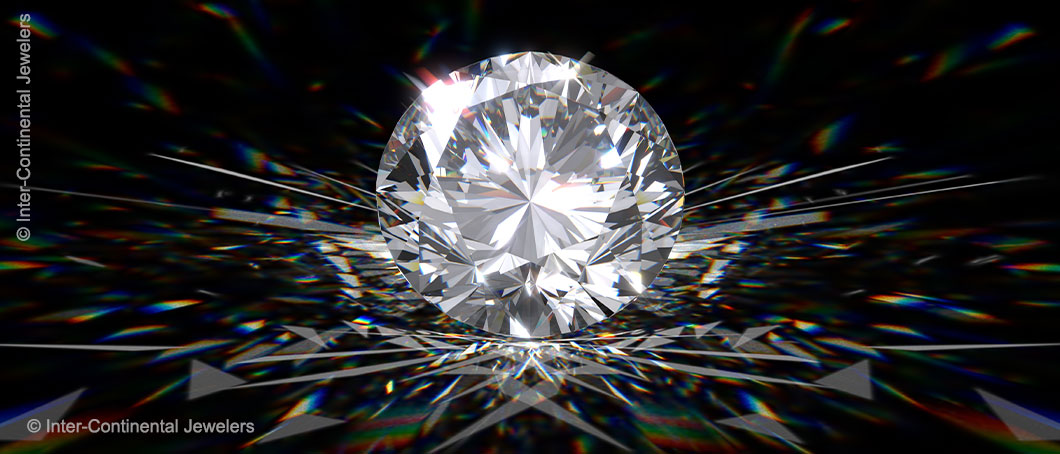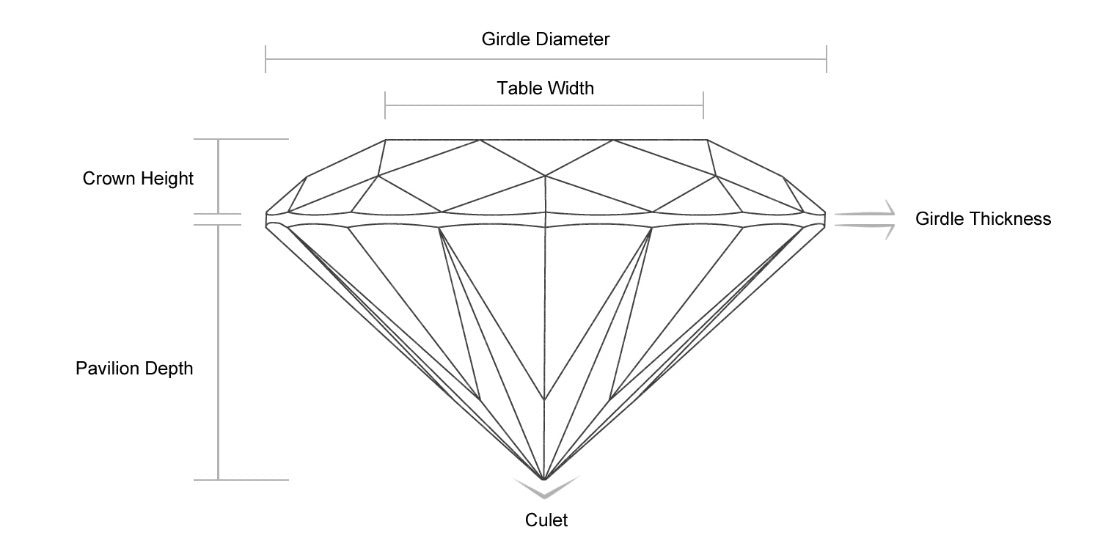
Anatomy of a Diamond
Just like its vital for physicians to understand the human anatomy, understanding the anatomy of a diamond is important if you are looking for you perfect diamond. Knowing the main components goes a long way in helping you to understand the beauty and quality of a diamond.
Role of Cut In A Diamond’s Anatomy
Diamond anatomy does not refer to the chemical composition of diamonds but is instead a reference to its physical components, structure and dimensions produced by the diamond’s cut. The diamond’s anatomy will determine the beauty of the diamond’s facets, the proportions of the stone and the extent of the stone’s light performance, including its brilliance, dispersion and scintillation.
The parts of a diamond and the quality of their cut contribute to the diamond’s overall cut grade. However, while the anatomy of a diamond is very important, it should not be used interchangeably with a diamond’s cut grade. These are two different things.
Main Components of a Diamond

Different diamond cuts result in different shapes but, in general, all diamond shapes have the same anatomic components and parameters:
- Table – the table of a diamond is the large flat surface, or facet, of the stone located at the top. It is the most visible part of the diamond when mounted on a ring or another jewelry piece.
- Diamond depth – this is the total depth of the diamond from its highest (table) to its lowest point (culet). More than just a number, the diamond’s depth plays a significant role in how light is reflected inside the diamond and how brilliant the diamond is. It’s often expressed as a percentage from the girdle’s diameter to show how the two compare with each other.
- Girdle – this is the outside edge of the stone at its widest point, located where the diamond’s crown and pavilion meet. The girdle’s diameter is the total width of the stone.
- Crown – the crown is the inclined surface that extends below from the table and reaches the girdle. It’s the second most viewed part of a mounted diamond after the table and its height and angle play a vital role in determining the stone’s overall brilliance.
- Pavillion – opposite the crown, the pavilion is the inclined surface that extends from the girdle and reaches the diamond’s culet. The pavilion is usually partially or fully hidden when the stone is mounted in a ring setting ring. Even when the pavilion is fully hidden by a ring’s setting its angle and depth still are still critical in how light is reflected inside the diamond.
- Culet – the culet is the lowest point of a diamond. Depending on the stone’s shape it can either be a pointy edge or a small flat facet.
Which Are the Most Important Components of a Diamond?
While each aspect of a diamond’s anatomy is important in the overall look of the stone, arguably the three most vital aspects are the diamond’s table, diameter and depth. These three features are the most important when evaluating the quality of the diamond’s cut and assigning it a cut grade.
